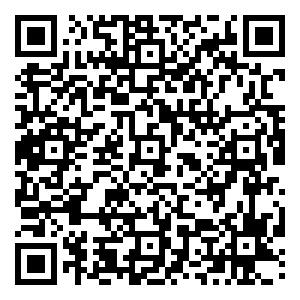Research on Correlation Mechanism of Commercial Space Vitality Based on Multi-Source Data
-
摘要: 基于多源数据分析体系发展,为城市商业空间研究拓宽了视角,但有关商业空间活力的讨论多侧重于建成环境或社交网络影响的单一维度,缺乏多维度的综合性实践。因此,从中微观角度出发,从实体环境、服务业态和活力氛围营造的多个层面,构建商业街区活力影响因素测度的指标体系,并在多源数据支持下,采用道路网、POI、街景图片和互联网点评数据,借助Arcgis技术平台、空间句法sDNA模型构建、街景语义分析等分析工具,探索各因素在相互作用过程中对商业街区活力产生的影响。结果展现14项具体测度指标与空间活力不同程度的正向关联,同时拓展了多源数据在中微观空间研究中的适应范围。Abstract: The development of a multi-source data analysis system has broadened the perspective of urban commercial space research, but discussions on the vitality of commercial space often focus on a single dimension of the built-up environment or social network impact, lacking comprehensive multi-dimensional practice. Therefore, an indicator system for measuring the factors affecting the vitality of commercial districts was constructed from the perspective of medium and micro, from multiple levels of physical environment, service formats and vitality atmosphere creation, and with the support of multi-source data, road network, POI, street view pictures and internet comment data were used to explore the impact of various factors on the vitality of commercial blocks during the interaction process, with the help of Arcgis technology platform, spatial syntax sDNA model construction, street view semantic analysis and other analysis tools. The results showed a positive correlation between 14 specific measurement indicators and spatial vitality to varying degrees, while expanding the applicability of multi-source data in meso and micro spatial research.
-
Key words:
- multi source data /
- commercial space /
- vitality /
- place atmosphere /
- GIS
-
[1] SPECK J. Walkable city: how downtown can save america, one step at a time[J]. Pedestrians,2012,103(1):120-121. [2] 张歆梅. 城市商业街研究发展综述[J]. 商业研究,2007(11):115-120. [3] 冯果川. 虚实相生:网络公共空间与实体公共空间的纠缠[J]. 新建筑,2015(6):135-136. [4] 周榕. 硅基文明挑战下的城市因应[J]. 时代建筑,2016(4):42-46. [5] 夏蜀. 数字化时代的场景主义[J]. 文化纵横,2019(5):88-97. [6] 杨垠莹. 谈城市活力的研究进展[J]. 山西建筑,2019,45(7):20-22. [7] 简·雅各布斯. 美国大城市的死与生[M]. 南京:译林出版社,1961. [8] 盖尔杨. 人性化的城市[M]. 北京:中国建筑工业出版社,2010. [9] 杨婉君. 基于多元数据的商业街区活力研究:以济南市泉城路商业街区为例[D]. 济南:山东建筑大学,2019. [10] 龙瀛,周垠. 街道活力的量化评价及影响因素分析:以成都为例[J]. 新建筑,2016(1):52-57. [11] 徐磊青,康琦. 商业街的空间与界面特征对步行者停留活动的影响:以上海市南京西路为例[J]. 城市规划学刊,2014(3): 104-111. [12] 孙庚,周兴,周雯,等. 利用多源数据的商业街品质局部-整体联合评价[J]. 遥感信息,2021,36(3):135-143. [13] 项婧怡,罗震东,张吉玉,等. 移动互联网时代"网红空间"分布特征研究:以杭州市主城区为例[J]. 现代城市研究,2021(9):11-19. [14] 周恺,张海涛,夏依宁,等. 社交媒体影响下的城市消费空间新特征:以小红书长沙"网红打卡地"为例[J]. 现代城市研究,2021(9):20-27. [15] 宋小冬,陶颖,潘洁雯,等. 城市街道网络分析方法比较研究:以Space Syntax、sDNA和UNA为例[J]. 城市规划学刊,2020(2):19-24. [16] YAO Y, ZHAO T L, ZE H Y, et al. A human-machine adversarial scoring framework for urban perception assessment using street-view images[J]. International Journal of Geographical Information Science,2019,33(12):2363-2384. [17] 邢忠,陈子龙,顾媛媛,等. 基于大数据的城市街道活力影响因素定量分析[J]. 西部人居环境学刊,2021,36(3):98-105. [18] 金俊,齐康,张曼,等. 城市CBD步行环境质量量化评价:以广州珠江新城和深圳福田中心区为例[J]. 中国园林,2016(8):46-51. [19] 杨友宝,李琪. 基于POI数据的城市公共游憩空间分布格局及其形成机制研究:以长沙市主城区为例[J]. 现代城市研究,2021(3):91-97. [20] 王芳,高晓路,许泽宁. 基于街区尺度的城市商业区识别与分类及其空间分布格局:以北京为例[J]. 地理研究,2015,34(6):1125-1134. [21] 缪岑岑. 基于街景图片数据的城市街道空间品质测度与影响机制研究:以南京中心城区为例[D]. 南京:东南大学,2018. [22] 李鹏. 互联网发展影响实体城市研究评述与展望:来自城市规划视角[J]. 城市发展研究,2021,28(12):55-61. -

 点击查看大图
点击查看大图
计量
- 文章访问数: 370
- HTML全文浏览量: 29
- PDF下载量: 8
- 被引次数: 0

 登录
登录 注册
注册 E-alert
E-alert

 登录
登录 注册
注册 E-alert
E-alert


 下载:
下载:
